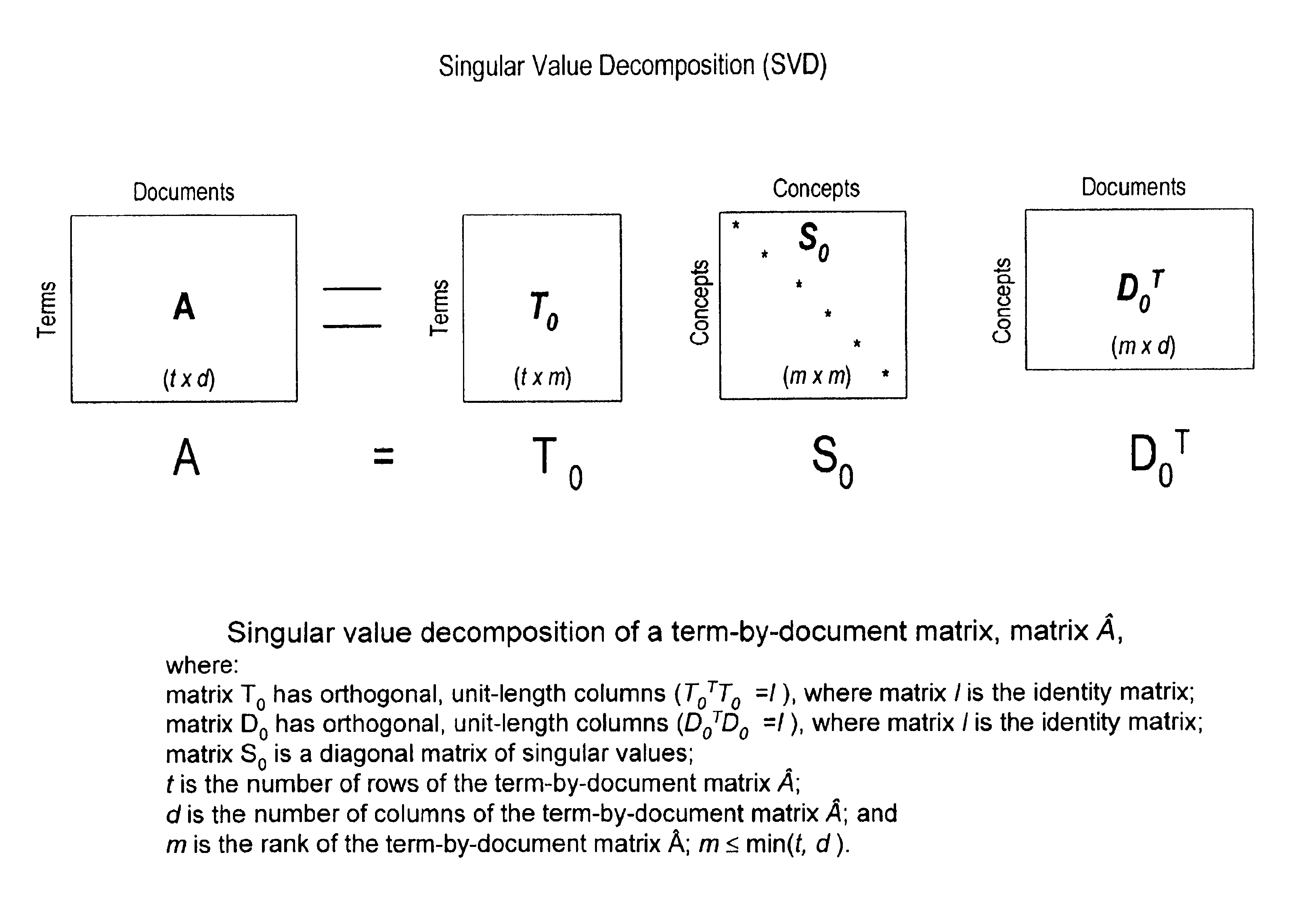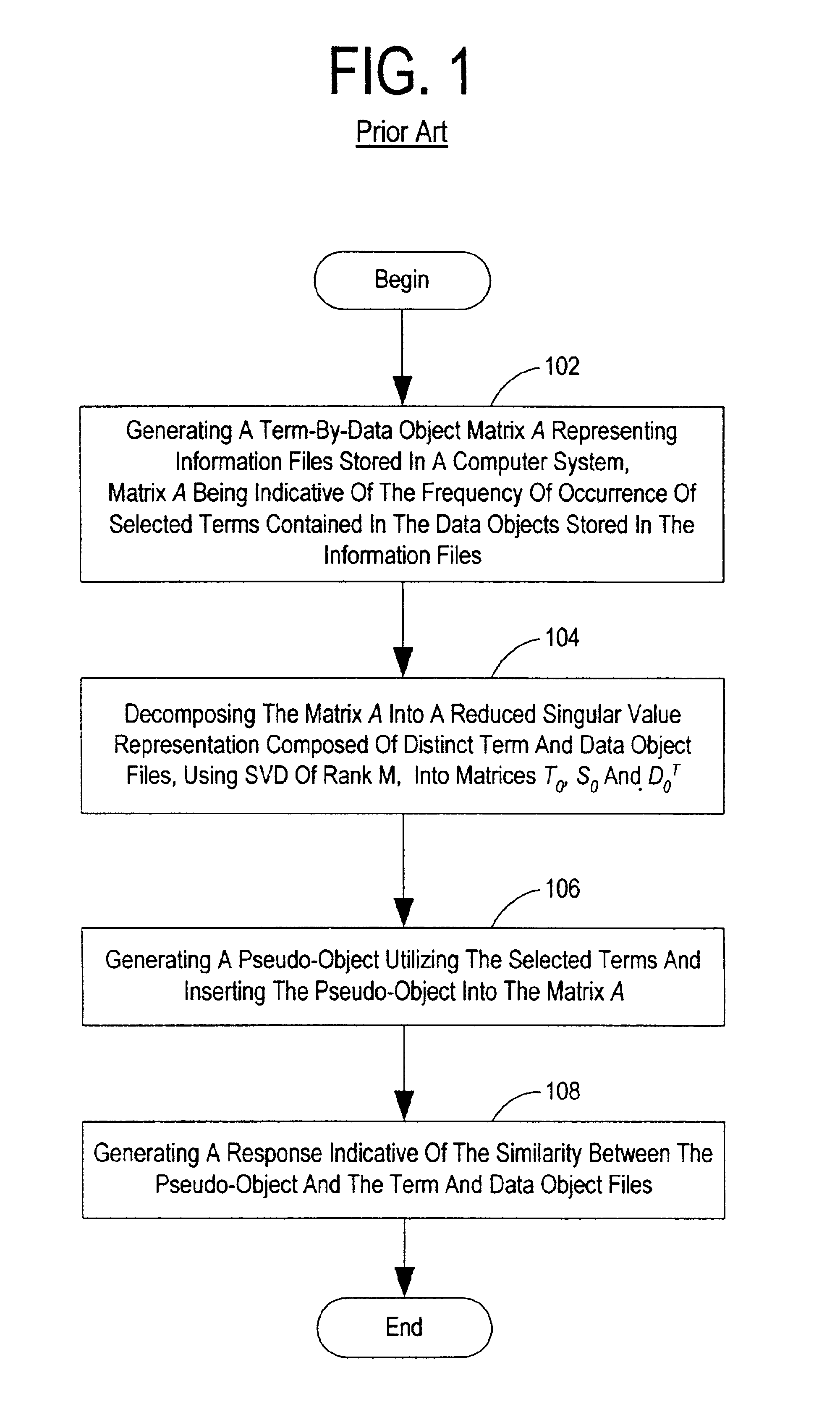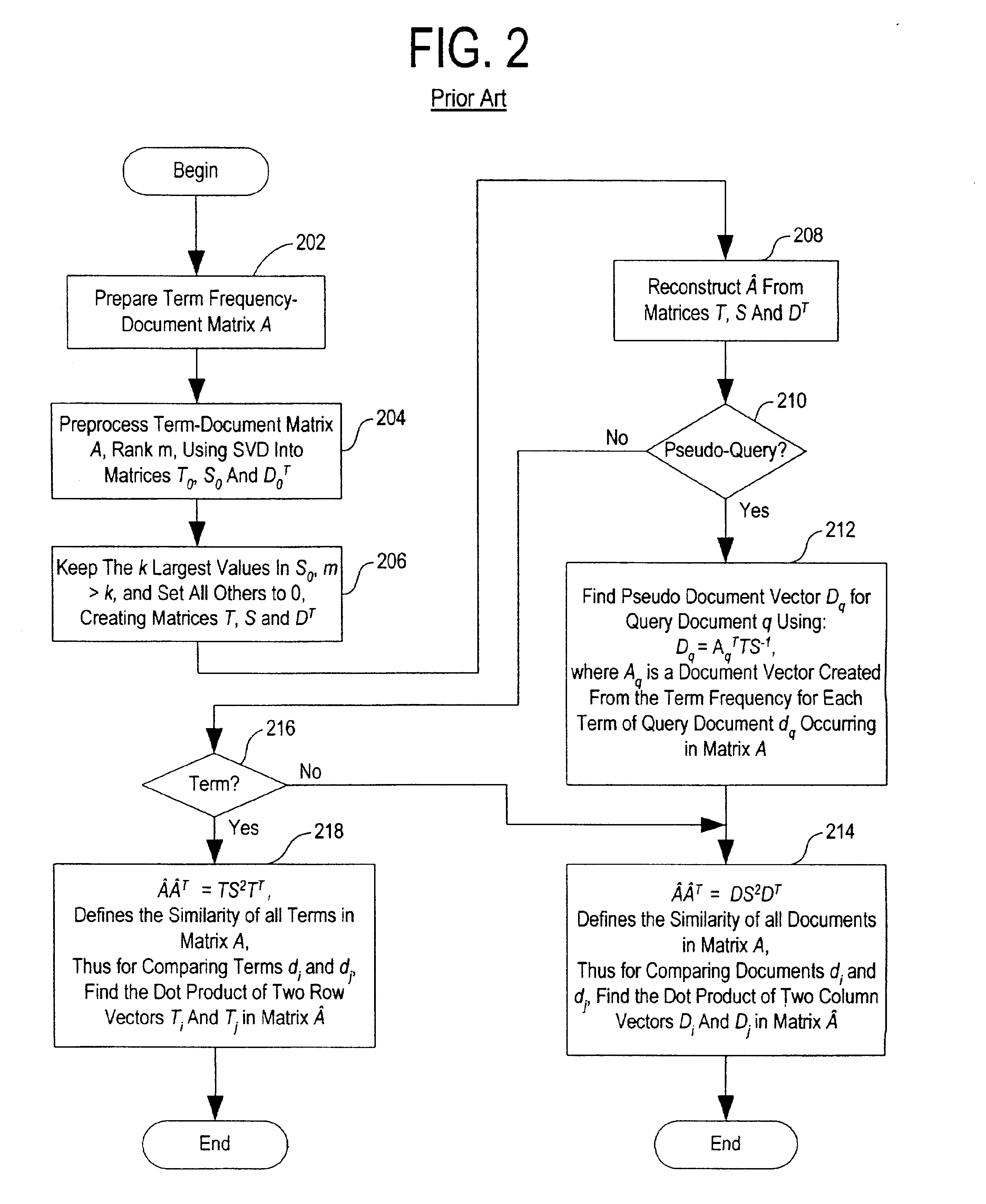Method and system for optimally searching a document database using a representative semantic space
a semantic space and database technology, applied in the field of data processing, can solve the problems of large solution set of unranked documents being returned, not being able to read all documents, and not being able to remember,
- Summary
- Abstract
- Description
- Claims
- Application Information
AI Technical Summary
Benefits of technology
Problems solved by technology
Method used
Image
Examples
Embodiment Construction
As discussed above, term searching using Boolean logic does not always offer optimal retrieval results because traditional Boolean information retrieval techniques require the user to understand the subject matter and comprehend how the terms are used in the corpus of information to be searched. Search strategies must be adjusted to reflect contextual usage of the terms in the corpus of information.
Human understanding of terms might be based on both the synonomic and polysemic nature of term meanings. Synonomy refers to the notion that multiple terms may accurately describe a single object or concept, while polysemy refers to the notion that most terms have multiple meanings. Therefore, for a user to completely understand the subject matter of a corpus of information, the user must be aware of each and all synonomic uses of a term, while simultaneously recognizing that the occurrence of a term outside the realm of the context of the subject matter.
As alluded to above, using term exp...
PUM
 Login to View More
Login to View More Abstract
Description
Claims
Application Information
 Login to View More
Login to View More - R&D
- Intellectual Property
- Life Sciences
- Materials
- Tech Scout
- Unparalleled Data Quality
- Higher Quality Content
- 60% Fewer Hallucinations
Browse by: Latest US Patents, China's latest patents, Technical Efficacy Thesaurus, Application Domain, Technology Topic, Popular Technical Reports.
© 2025 PatSnap. All rights reserved.Legal|Privacy policy|Modern Slavery Act Transparency Statement|Sitemap|About US| Contact US: help@patsnap.com



